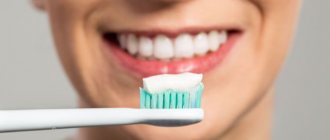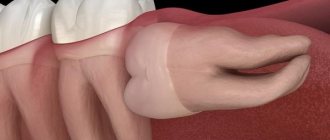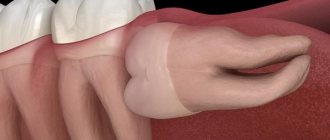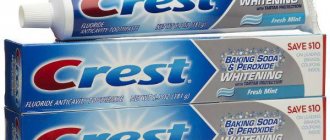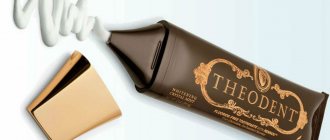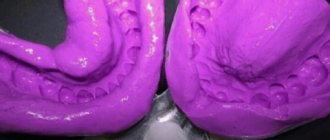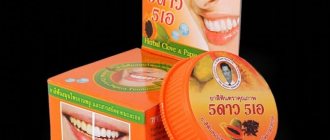Acid solutions - bleach - are used to brighten the surface of metals and alloys. At the initial stage, etching is carried out, that is, the oxidized layer is removed. To eliminate residual effects, special abrasives are used that can level out fat and unevenness. These fluxes contain dissolved oxides. Chilling is designed to eliminate fluxes and oxides after the surface cleaning stage.
The composition and concentration of chill varies depending on the characteristics of the planned work. Basically, the procedure is aimed at improving the decorative properties of the material. There is also a practical purpose. For example, chilling cast iron helps to increase the wear resistance and hardness of the material.
Bleaching Composition and use of bleach
Chills are placed in glass containers or porcelain trays. The containers are placed on heating surfaces placed in the exhaust system. Additional protection – acid-resistant screens. And all because bleach is an acid solution, working with which requires certain precautions.
But why does humanity need bleaches, what are they from a practical point of view? What is bleach
Acid solutions are used for bleaching metals and alloys, hence the name of the compositions. The process of surface brightening begins with etching. This is the name for the procedure of removing and cleaning off the oxidized layer. Its remnants are removed with fluxes - special abrasives that remove grease and residual unevenness.
Fluxes are used with oxides dissolved in them. After cleaning, it is necessary to remove both fluxes and oxides. This is where bleaching . The composition of acid solutions and their concentration depend on the desired end result and the alloy being bleached. Typically, a 5% sulfuric acid solution is used.
Interestingly, bleaching is considered a manufacturing defect. For example, 75% ferrosilicon (an alloy of iron and silicon) is specially introduced into cast iron in the amount of 10% of the total volume of cast iron. This is done after treating it with magnesium. It gives a whitening effect, which is neutralized using a ferroalloy.
But sometimes whitening is needed. Mainly for decorative effect. But there is also a practical orientation of the method. The same chilling of cast iron increases its hardness and wear resistance. The characteristics are necessary for the production of mine linings and train wheel rims. But, for other parts there is no need for a modified alloy. Therefore, different standards are used for ordinary, gray cast iron.
Types of whitening
In addition to sulfuric acid-based bleaches, there are compositions with hydrochloric acid. For the latter, a 10% solution is used. Such bleaches are used to work with gold and silver. Brass is cleaned with nitric acid solutions. Sulfur and table salt are also added to the solution. The mixture is potent. Brass is more difficult to process. Chill for stainless steel is also multi-component.
All types of chills are used heated to 40-60 degrees Celsius. Work with gloves, because acids can damage the skin. After bleaching is completed, the metal is washed to remove any remaining reagent from its surface.
Composition and use of bleach
The application of bleach is a short-term process. To achieve the effect, usually 20-30 seconds are enough. The same amount is spent on lightening dental crowns. One of the types is metal. During the production process, they are subjected to heat treatment. High temperatures accelerate surface oxidation.
As a result, scale forms - an oxidized film on the crowns. The plaque is dark and makes dentures unsightly. This is not enough, scale is more fragile than the base metal. The plaque simply disintegrates in the mouth. The feeling is not pleasant. So doctors have to use dental whitening so that the crowns do not cause trouble.
Dentists use three whitening options. The first contains 22 parts water, 44 parts hydrochloric acid and 22 sulfuric acid. Second recipe: - 47 parts of water, the same amount of hydrochloric acid and 6 parts of nitric acid. The third bleach contains 85 parts water, 10 nitric acid and 5 hydrochloric acid.
Often, gold crowns are ordered. In this case, doctors, like jewelers, use the third solution option. A 10% sulfuric acid-based bleach is also used. The temperature for working with yellow metal is 50 degrees Celsius. The bleach for gold is more concentrated than the composition for silver.
It requires only a 1% solution of the same sulfuric acid. But, the clarification temperature of white metal is higher - about 70 degrees Celsius. Chill for silver resembles cupronickel silver in terms of processing temperature. But cupronickel is poisoned with a 12% solution of the strongest acid.
Non-metallic materials
Fluxes .
One of the main conditions for the formation of a strong junction is a gradual transition from the structure of the solder to the structure of the base metal. This can only occur with mutual diffusion of both alloys - solder and base metal. Mutual diffusion is due to the ability of metals with a high melting point to dissolve in a liquid metal whose melting point is lower. It is known, for example, that platinum can dissolve in lead.
Thus, when soldering, it is necessary to achieve mutual diffusion of the alloys, and this is only possible if the base metal is wetted with solder and their close mutual contact.
Wetting depends on the condition of the surface and deteriorates sharply in the presence of fat, mechanical impurities and an oxide film formed during the soldering process on the surface. Before soldering, grease and mechanical impurities must be removed. The oxide film formed during the soldering process is removed using a special substance - flux (flux).
Fluxes dissolve the oxide film and float in the form of slag to the surface of the solder, which as a result receives good contact with the surface of the base metal. Fluxes must have the following properties:
- 1) have a melting point lower than the melting point of solder;
- 2) easy to flow on a metal surface;
- 3) decompose and volatilize at soldering temperature;
- 4) remove all oxides formed on the metal surface during soldering;
- 5) easy to remove from the surface after soldering is completed.
When soldering using soft solders, a concentrated solution of zinc chloride or solder with rosin (harpius) is used. Zinc is usually dissolved in hydrochloric acid. The main component of all fluxes when soldering using hard solders is sodium borate, which dissolves the metal oxide film.
At a temperature of 400 °C, sodium borate loses all ten molecules of water, and at 741 °C it melts, turning into a transparent, brittle mass that dissolves the oxide film.
If sodium borate is applied to the surface of a very heated metal, then due to the rapid process of dehydration, the sodium borate sinteres with the formation of bubbles that displace the solder, and the seam becomes weak. The technique for applying borax to the surfaces to be soldered can be different.
It is necessary to use slow heating, in which rapid dehydration is not observed. It is necessary to avoid overheating, since this causes the borax to form balls that are difficult to remove from the surface after soldering is completed.
When soldering precious metals brass and copper with gold and silver solders, good results are obtained when using a flux of the following composition: 55% sodium borate (powdered dehydrated) Na2B4O7, 35% boric acid H3BO3, 10% silicon oxide SiO2.
Sodium borate must be free of crystallization water, since during soldering the resulting water vapor causes the appearance of shells and pores. Boric acid lowers the melting point of the flux and promotes its fluidity. Silicon oxide creates the necessary viscosity of the flux and forms a dense film after fusion. The flux is prepared by fusing the components (sodium borate, boric acid and silicon oxide). The sintering product is crushed.
Flux can be used in powder or paste form. The paste is prepared by mixing powdered flux with alcohol or petralatum (Vaseline).
The flux of the specified composition can be used not only for soldering, but also for casting.
The following flux composition (percentage by weight) is more effective: flux (of the named composition) - 40, sodium borate (dehydrated) - 30, tartar salt (unrefined) - 25, charcoal - 5.
When soldering stainless steel, pure sodium borate does not give the desired effect, since it does not remove oxides from the surface of the stainless steel. The most effective flux for soldering stainless steel is a flux consisting of equal parts of boric acid and potassium fluoride.
You can use a flux made from a mixture of boric acid and caustic soda or a mixture of flux for soldering alloy gold and the same amount of potassium fluoride.
It must be remembered that when soldering stainless steels, fluxes do not so much dissolve the already formed oxide film as prevent its formation. In this regard, flux must be applied to a clean surface of slightly heated metal.
If a brown or blue oxide film forms on the metal surface during soldering, it is necessary to cool the parts, remove the oxide film, and only then begin soldering again.
Whitewashes . During heat treatment (annealing) of metal dental structures, a chemical interaction of the metal with atmospheric oxygen occurs, resulting in the formation of an oxide film on the surface - scale. It must be removed, as it worsens the appearance and complicates the rolling and drawing processes.
It is harder than metal, and its presence on the surface of the metal being processed can lead to the formation of scratches on the working surfaces of machine tools (shaft, die). In addition, scale can chip off in some areas and be pressed into the metal in others, thereby deteriorating the quality of the product.
The presence of scale also complicates the grinding and polishing processes.
Removal of scale is carried out chemically. Substances used to dissolve scale are called chills, and the process of removing scale is called bleaching. Aqueous solutions of sulfuric, nitric acids or mixtures thereof are used as bleaches. In some cases, additives are introduced (saltpeter, etc.).
There are a number of requirements for chilling, the main of which is complete and rapid dissolution of scale and minimal dissolving effect on the metal.
Since all base metal alloys react to acids to a greater or lesser extent, bleaching must be done very carefully so as not to destroy the metal surface.
In the case of the formation of an oxide film of significant thickness, in particular during hardening of 1Х18Н9Т stainless steel, bleaching is carried out in two stages. First, the product is treated with strong (aggressive) solutions (this operation is called etching), and then it is exposed to a less active solution, which improves the surface.
It is recommended to bleach 1Х18Н9Т stainless steel with solutions of the following composition. Solution No. 1 contains (percent by volume): hydrochloric acid (density 1.14)—44, sulfuric acid (density 1.83)—22, water—34. Processing with the solution (etching) is carried out at a temperature of 105–110 ° C for 4-6 minutes.
After etching, the product is washed in cold water and then bleached at a temperature of 60 ° C for 10 minutes in solution No. 2 of the following composition (percent by weight): sulfuric acid (density 1.83) - 10, sodium nitrate - 2, water - 88.
It is not recommended to carry out etching in hot hydrochloric and nitric acids or their mixtures in order to avoid overheating of individual areas where the oxide film is thicker. Silver and copper can be bleached with nitric acid.
During the bleaching process, not only the oxide film is destroyed, but also partially the metal, so the requirements for bleaching are to dissolve scale well and not dissolve metal. Unfortunately, there are no acids that do not dissolve metals at all.
However, the effect of acid on metal can be weakened by introducing an inhibitor—a corrosion retarder—into the chill. The inhibitor is adsorbed on pure metal and prevents contact of the metal with the acid. Free scale, interacting with acid, dissolves.
When bleaching, you can use Unicode PB-5 as an inhibitor, which is a condensation product of aniline with methenamine.
Insulating materials . If, during the manufacture of a prosthesis, the surface of the plaster is not isolated from the plastic swollen in the monomer, then part of the monomer is absorbed into the plaster and polymerizes there when heated.
After removing the finished product, a layer of gypsum that has adhered to the plastic remains on the surface of the product. This layer is difficult to remove, so it is necessary to create an insulating layer between the plaster and the plastic.
Good results can be obtained by lining the plaster mold with thin tin foil. Tin foil prevents monomer from penetrating into the plaster and water from penetrating the plastic. Water absorption by plastic reaches 2%.
Water, penetrating into the intermolecular space, causes a specific stress in the plastic, which can cause cracks when the prosthesis is wetted with organic solvents (monomer, alcohol, acetone).
However, the penetration of water into the prosthesis is a necessary evil that cannot be excluded. If water does not enter the denture during its manufacture, then this happens in the oral cavity.
However, it must be borne in mind that a prosthesis made using foil as insulation has 3 times less water absorption than when using other release agents. However, the foil interferes with the accuracy of the prosthesis base.
The insulating material can be various substances (Table 72). The most widely used release materials are sodium alginate. They are colloidal 1-1.5% aqueous solutions of sodium alginate or ammonium alginate with the addition of salts (sodium phosphate, sodium carbonate, etc.).
To prevent molding, formaldehyde or diacide is added to the solution. When a sodium alginate solution is applied to gypsum, a double exchange reaction occurs between the gypsum and alginate with the formation of a solid film of calcium alginate. Thus, the insulating layer is calcium alginate.
There is no point in applying a thick layer, because the top layers do not react with the plaster and remain in the form of a dried gel.
In addition, this negatively affects the quality of the prosthesis.
To speed up the process, you can treat the sodium alginate layer applied to the mold with a 20% calcium chloride solution. The calcium alginate film insulates the plastic well, but does not completely prevent water from entering it, which leads to stress in the plastic.
The thickness of the alginate film when applied in two layers is approximately 0.01 mm. It is undesirable to use liquid glass as a separating agent, since this alkaline substance causes a change in the color of pigmented plastic.
Liquid glass is used only as an insulating layer between two gypsum surfaces.
Good results can be obtained by using the insulating material (release varnish) AC-1, which is a 6% acetone solution of etrol. Creating an insulating layer is important. The technician is usually satisfied when the plastic separates well from the prosthesis.
However, it is equally important to prevent water from entering the prosthesis, since water absorption leads not only to discoloration, but also to stress in the prosthesis. None of the foil substitutes can completely eliminate cloudiness and whitishness in plastic.
The resulting stresses are one of the reasons for the failure of prostheses.
Solutions of silicone resins are also used as release agents. Silicone release material silicodent is a cold vulcanized filled silicone compound. Used to isolate the interdental space of the cervical part of the tooth from plaster during the manufacture of a prosthesis, as well as in the manufacture of facets and other works.
After polymerization, the silicone dent film is easily removed from the prosthesis. Siliconodent is a paste and two curing liquids. Paste (percentage by weight): polydimethylsiloxane - 39.3; magnesium oxide - 6.7; white soot (SiO2) - 25.6; white spirit - 28.4. Liquid No. 1 is a mixture of dibutyltin dilaurate and tetraethoxysilane. Liquid No. 2 - hydropolymethylsiloxane.
Cover varnishes . In the manufacture of fixed dentures, to obtain an aesthetic effect, the surface of the metal structure is lined with plastic. To ensure that the metal does not show through the layer of plastic, and the plastic does not acquire a gray or yellowish tint depending on the color of the metal, the metal is coated with a special varnish. Cover varnishes should:
- 1) have good adhesion to metals;
- 2) connects well with plastic;
- 3) have good hiding power;
- 4) form a durable film of uniform thickness;
- 5) be stable in the oral cavity.
The medical industry produces two topcoat varnishes: EDA topcoat varnish and topcoat varnish for dental work. EDA varnish is a cold-curing acrylic compound of the powder-liquid type. The powder is a special acrylic copolymer containing up to 2% residual benzoyl peroxide and clouded with titanium dioxide.
Liquid No. 1 is methyl methacrylate containing up to 3% activator, liquid No. 2 is a 50% solution of epoxy resin in a mixture of methyl methacrylate and methacrylic acid. When the powder is mixed with a mixture of liquids No. 1 and 2 (in equal volumes) at a ratio of 1: 2, a creamy mass is formed, which is used to cover a metal surface heated to 40-45 ° C.
Within 8-10 minutes, a strong film is formed, which has an adhesion to the metal equal to 3 MN/m2. Cover varnish for dental work is a suspension of pigments in organosilicon heat-resistant varnish KO-815. Crowns, umber and titanium dioxide are used as pigments. Film application time 30 min.
First, the product is kept in air for 20 minutes, and then finally dried at 115-120°C for 10 minutes.
Various materials.
Moldin is a plastic mass used in dental practice for molding denture dies from a low-melting alloy, for covering seamless orthodontic dental crowns and for covering lead dental dies during combined stamping of steel crowns. Mauldin is a plastic mass of the following composition: 64.6% kaolin; 34.4% glycerol, 1% sodium hydroxide.
Standard base plates AK.R-P are plastic blanks in the form of two types of plates for the manufacture of individual impression trays for the upper and lower jaws. The plates are made from a plasticized copolymer of methyl methacrylate and styrene; their softening temperature is 55-60 °C. The plates are easily formed and, when heated, cut with scissors.
Source: https://ortostom.net/content/nemetallicheskie-materialy
Characteristics
Scale or oxide film forms on metal surfaces when interacting with oxygen during heating through an open fire. This formation prevents further stages of preparing the prosthesis for installation. Elementarily, it is not possible to evaluate the appearance of the surface visually, which prevents you from choosing the right tool and processing sections of the structure.
If global modification of the prosthesis is not required, for example, only a few areas need to be soldered, then there is no need to clean all components. In this case, it is enough to clean the places where soldering will be performed directly. This allows you to avoid thinning of parts, especially if their thickness no longer exceeds a millimeter. For this purpose, techniques are limited to fine-grained sandpaper or carborundum stone.
When it is necessary to remove the entire formed layer, chemical reagents are used. The method is relevant even for such high-precision products as impression transfers, for example.
The ideal chilling behavior is to dissolve the films, but without reacting with the base metal. Solutions of inorganic acids have such properties to one degree or another.
Basically, whitening also affects the metal surface after the oxide is destroyed. When working with such products, it is necessary to strictly observe the period of exposure of the prosthesis in acid. There are no other ways to act exclusively on scale for a number of metals, for example, stainless steel.
Features of alloys
For a number of specific alloys, certain compositions are used. To bleach silver-palladium products, a 10-15 percent solution of hydrochloric acid is used. After the temperature stage of production, gold products are covered with scale. This is a thin layer that can be easily removed with a 30% hydrochloric acid solution.
For noble metals, use the appropriate means:
— for silver, alcohol-based bleach is used (96%); - for gold, a 40-50 percent solution of hydrochloric acid is suitable.
When using, it is necessary to heat the prosthetic structure red-hot and immerse it in the composition. An alternative method is to boil the workpiece in the finished substance.
Stainless steel reacts with bleach, which means that with prolonged exposure it will gradually dissolve. This is especially dangerous for thin areas of dentures, the strength of which decreases from the slightest defects. In this case, their thickness will be uniformly reduced over the entire area, with all the ensuing consequences.
It is important to know how long it is necessary to keep the metal in the active medium. This period depends on the characteristics of the particular material.
The method of bleaching stainless steel involves heating the substance to a boil, after which the workpiece is immersed in it. It needs to be kept for about a minute, after which the product is removed, washed and wiped to remove any foreign liquids.
Since the preparation of acids is usually carried out by a technician in-house, the ingredients must be mixed correctly. You cannot pour water into sulfuric acid; H2O is always added to the active substance!
Precautionary measures
There are a number of requirements for workers who use chemically active compounds in practice. They are enshrined in law, so before starting bleaching you need to make sure that you have an understanding of TB.
If your laboratory has several employees, then it is worth publishing this list periodically. In this way, it will be possible to avoid injuries and emergencies due to simple ignorance of responsibilities.
General requirements:
— only persons who have reached the age of majority are allowed to work with acids (similarly, with alkalis); — the specialist must have the appropriate level of professional training, have documents confirming education and qualifications; — when hiring, a series of examinations are carried out to ensure that the person’s health allows them to interact with active compounds. For this purpose, a number of medical examinations are performed; — in the workplace it is regularly necessary to conduct introductory and initial briefings. The first is for those newly hired, the second is performed periodically; — on labor issues, the manager periodically conducts surveys to identify weaknesses in the concept of safety.
Repeated briefings are carried out at least once every six months, inspections are carried out annually.
